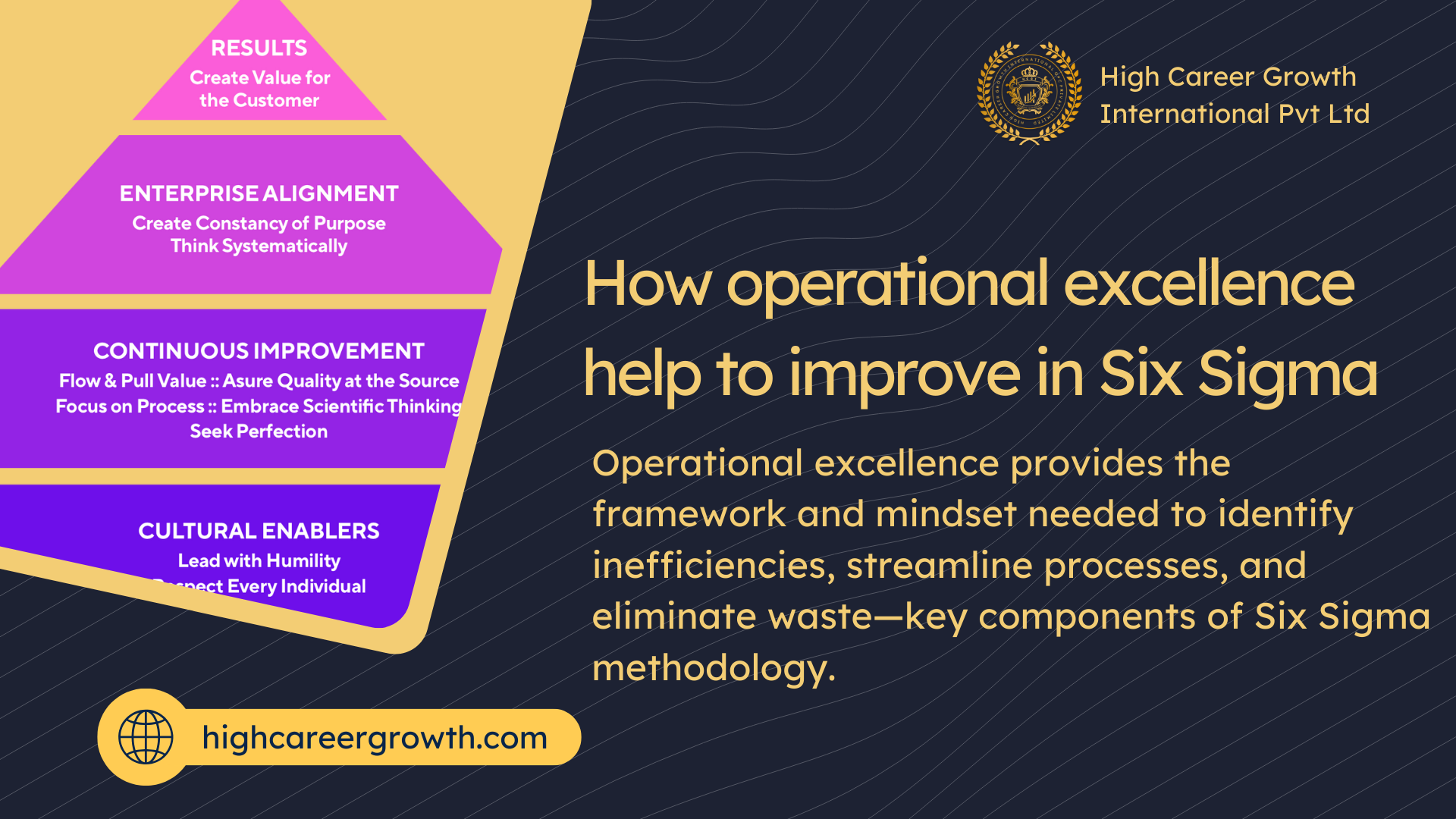How to create the culture of Six Sigma in any Organization
It’s basically the collective behavior of human resources, their collaboration, and their creativity, sharing responsibilities, common thoughts, actions, and common goals aligned with the business objectives.
In order to create such a culture, we need to start from the grass-roots level. Everyone should be imparted with knowledge on tools, techniques, current market and customer expectations, sense of ownership, sharing, working as team, being creative, and open for changes. Above this a motivated and passionate leadership with a vision to take this forward and convert everything into desired results. The key ways to promote culture is drive leadership, empowerment, collaboration, safety and standards.
Six Sigma leadership principles: It a well-known fact that if the organization does not have a strong leadership Lean Six Sigma initiative will fail. As leaders we are supposed to support our human resources during every situation whether good or bad. Leadership must have a strategic plan in place and a strong will to deploy it. What may come they should be ready to back their plans if they believe in it. Leader should be flexible, approachable, effective communicator, should be open to suggestions, encourage and empower their human resources. A good leader is one who never blame their human resource for the failure but rather look for opportunities, how to bring a change in the process and procedures so that the in future those mistakes are not repeated.
Six Sigma Principles for Empowerment The Organization
: Key people with the required capabilities should be identified and trained on various problem-solving techniques and decision-making. People should be given roles and responsibilities. They should be given enough opportunities to demonstrate their skills. Empowering such employees will help the organization to achieve their continuous goals.
Collaboration: The American author Helen Keller righty said “Alone we can do so little; together we can do much better “, it’s truly applicable for an organization, few knowledgeable people cannot drive an organization’s growth. You need a culture of knowledge sharing and collaborations, not only within the process, organization but even with different suppliers and vendors.
Safety: An organization should provide a safe, clean, comfortable working environment for their employees. The organization not only needs to adhere to all safety standards but make everyone take the responsibility for it, that’s where employees will feel safe and comfortable and contributes toward increased productivity and profitability. You can create this culture by creating awareness of personal safety and environmental safety.
Standards: An organization should create a culture wherein all standards related to safety, operations, quality, procedures, policies, workplace layout needs to be maintained and continuously improved based on changes in the market and customer requirements. Standard can be defined as the best-known procedure or process or system at a particular point of time and is considered as the baseline for further improvements.
The well designed Lean Six Sigma training program of High Career Growth Private Limited, Bangalore, India not only supports professionals to develop their lean six sigma skills but along with them, they lean the importance of developing a lean six sigma culture for an organization and how to deploy it and become a people-centric, customer-centric and profitable organization.







